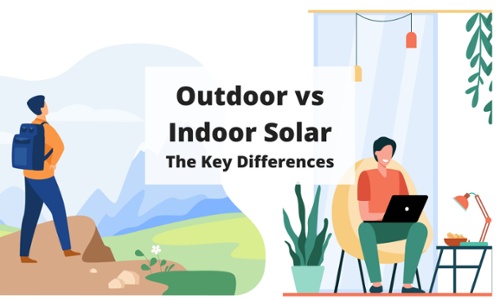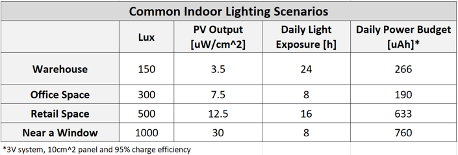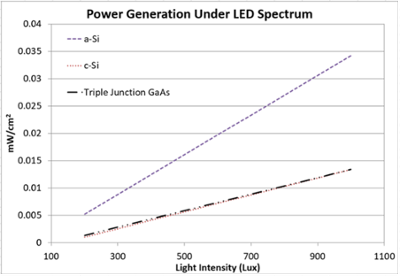
Originally published: 8-10-18
Can I use my solar panel indoors?
We get that question a lot at PowerFilm.
The answer isn’t as cut and dry as you might think.
Take this blog post with you!
In short, only PV modules rated and optimized to collect low-intensity artificial lighting will perform well, while traditional modules will perform poorly, if at all.
Light intensity and light spectrum are the two main differences affecting panel performance.
Light Intensity
To our eyes, indoor environments seem pretty bright. That’s because our eyes are so good at adjusting.
In actuality, indoor lighting can be more than 1,000 times less intense than direct sunlight. That means there’s 1,000 times less power available for a solar panel to collect.
At light intensities of 50% of direct sun and below, minor material defects and parasitic leakage can quickly reduce the output of a regular solar panel to zero.
It is essential to understand your use case and source a PV module that is rated and optimized for the light intensity of your environment, indoors and outdoors.
Outdoor light intensity is usually measured in W/m^2, while indoor light is measured in terms of Lux. The tables below show common indoor/outdoor lighting scenarios, correlating PV output, and estimated daily power budget.

A PV module will generate power as long as the lights are on.
Retail spaces and rooms with natural light are usually brighter than office spaces or warehouses. If and when the lights turn off can significantly impact the overall power budget.
Office space is generally brighter than a warehouse; however, lights in a warehouse often stay on 24h per day, yielding a larger power budget.
Indoor power budgets usually range between 100uAh – 1000uAh per day (3V systems).

At higher intensity, outdoor output and power budget are listed in mW/mA instead of uW/uA.
Traditional solar panels are rated at 100% sun intensity. As you can see, this is an ideal use case, and most realistic scenarios will encounter much lower intensity on a regular basis.
Outdoor power budgets are typically between 5-500mAh (3.7V) per day but can be much higher using a larger solar panel.
Light Spectrum
The second significant difference between outdoor and indoor light is their spectrums. Every light source, such as LEDs, Fluorescents, or the sun, is made up of a different combination of colors.
The sun is a nearly endless combination of colors from blue to red and even extends into the infrared (heat).
LEDs and Fluorescent lights (often used indoors) have more discrete light spectrums where a couple of specific colors combine to form white.
Solar panels are not colorblind and respond to each color of light differently.
To collect the maximum amount of light possible from the sun, most technologies, such as Crystalline silicon (c-Si), Gallium arsenide (GaAs), and Copper indium gallium selenide (CIGS), are optimized to absorb visible and infrared light (learn more about the benefits and drawbacks of these solar technologies).
Panels that use these technologies often perform poorly in indoor environments with no infrared light, as seen in the graph below.

Indoor optimized amorphous silicon (a-Si) solar cells perform better than traditional high-efficiency solar under a low-intensity LED spectrum.
Amorphous silicon (a-Si) only absorbs light in the visible range and is well matched to indoor light sources such as LEDs and Fluorescents.
Knowing your light source and having realistic power expectations will help you choose the right solar panel for your application.
Our thin-film flexible Indoor Light and Classic Application solar panels are well suited for low-power IoT applications in indoor and outdoor environments.
Indoor panels are rated at 200 / 1000 lux and outdoor modules are rated at 25% / 100% sun intensity. Start your evaluation or prototype with our simple to use development kits.
Our high-efficiency semi-flexible Soltronix or ultra-rugged thin-film solar panels are an excellent option for higher power fixed installations.
Whether installing devices in a warehouse or a remote pipeline, PowerFilm will work with you to understand your use case and provide the optimal solar solution for your needs.
If you have questions or would like to discuss your application, please contact us!
Take this blog post with you!